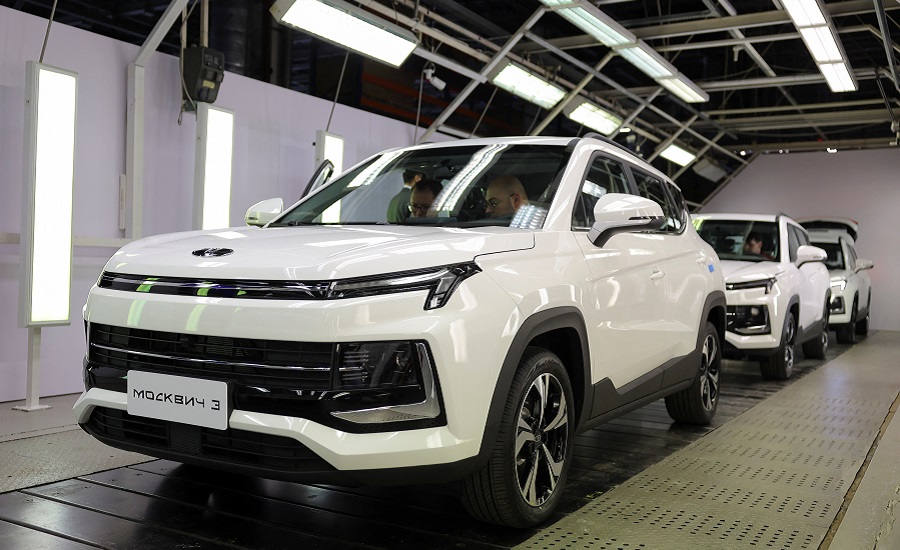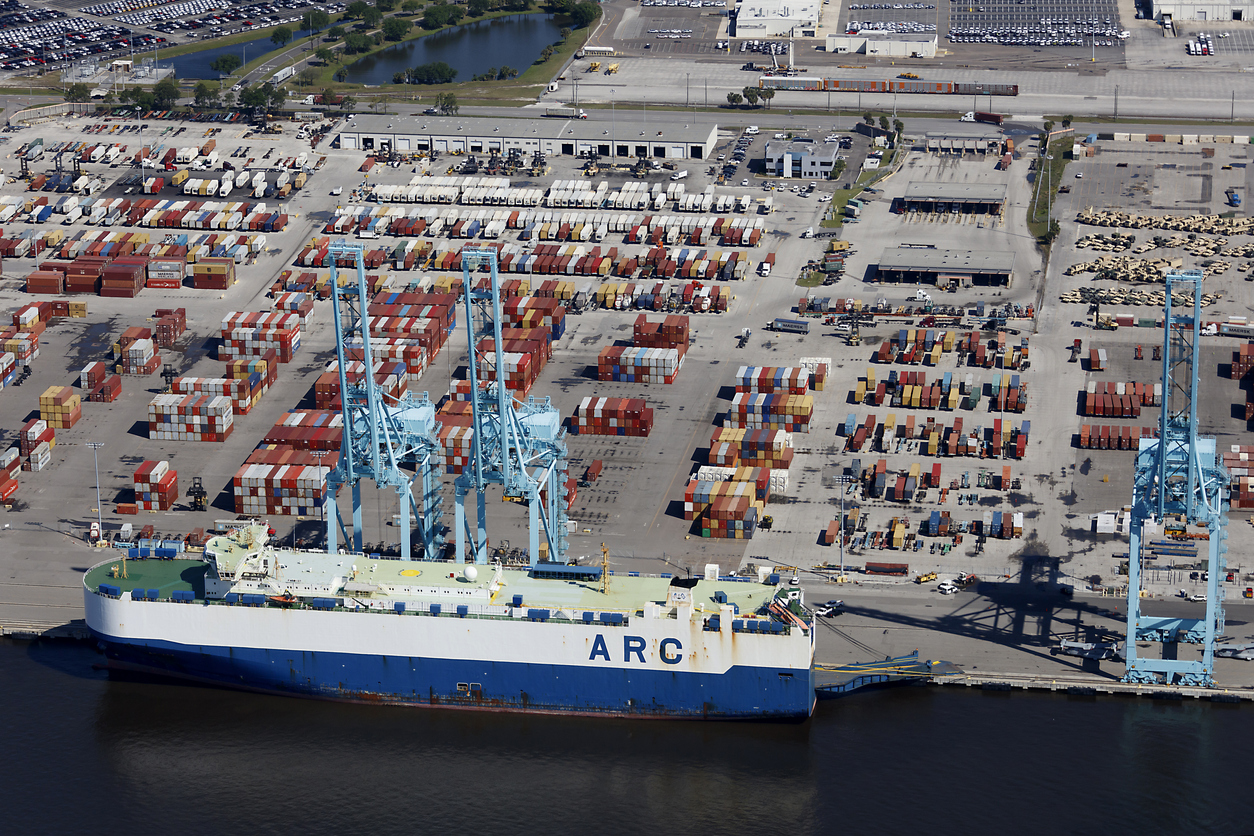Evaluating The Future Of China's Car Exports

Table of Contents
Growth Drivers of China's Car Export Boom
Several factors contribute to the remarkable boom in China's car exports. Understanding these drivers is crucial to predicting future trends in China's car exports.
Competitive Pricing and Manufacturing Efficiency
China boasts a significant cost advantage in car manufacturing, a key factor driving its export competitiveness. This advantage stems from:
- Lower labor costs: Compared to many developed nations, China's labor costs remain significantly lower, making car production more affordable.
- Access to advanced technology: China has made substantial investments in advanced manufacturing technologies, leading to increased efficiency and productivity.
- Economies of scale: The sheer scale of China's automotive industry allows for significant economies of scale, further reducing production costs.
- Government subsidies and support: The Chinese government actively supports its automotive industry through various subsidies and incentives, enhancing its competitiveness in the global market. These policies directly impact the price competitiveness of China's car exports.
Technological Innovation and Electric Vehicle (EV) Dominance
China is a global leader in electric vehicle (EV) technology, a sector poised for exponential growth. This technological prowess is a major driver of China's car export boom.
- Investment in battery technology: China leads in battery production and innovation, a critical component of EV manufacturing. This advantage translates to cost-effective and high-performing EVs for export.
- Advancements in autonomous driving: Chinese companies are making significant strides in autonomous driving technology, further enhancing the appeal of their EVs in international markets.
- Government support for EV adoption: The Chinese government strongly promotes EV adoption both domestically and internationally, providing substantial support for EV manufacturers.
- Key Chinese EV brands and their global expansion: Companies like BYD, NIO, and XPeng are aggressively expanding globally, capitalizing on the growing demand for EVs. Their strategies heavily influence the volume of China's car exports.
Strategic Partnerships and Global Supply Chains
Chinese automakers are actively forging strategic partnerships to expand their global reach. These collaborations play a significant role in the success of China's car exports.
- Joint ventures: Many Chinese automakers have established joint ventures with international companies, leveraging their expertise and market access.
- Acquisitions: Strategic acquisitions of foreign automotive companies or technology firms enhance China’s technological capabilities and global presence.
- Technology licensing agreements: These agreements allow Chinese automakers to access advanced technologies while protecting their intellectual property.
- Impact of global supply chain dynamics: China's position within global supply chains plays a vital role in its ability to efficiently manufacture and export vehicles.
Challenges and Risks Facing China's Car Export Growth
Despite the impressive growth, several challenges and risks could hinder the future trajectory of China's car exports.
Geopolitical Risks and Trade Tensions
Geopolitical uncertainties and trade tensions pose significant risks to China's car export ambitions.
- Trade disputes with the US and other countries: Ongoing trade disputes could lead to tariffs or other trade restrictions, impacting the competitiveness of China's car exports.
- Potential tariffs and restrictions: The imposition of tariffs or other trade barriers could significantly increase the cost of Chinese vehicles in foreign markets.
- Impact of geopolitical instability on global supply chains: Geopolitical instability can disrupt global supply chains, affecting the timely delivery of components and finished vehicles.
Brand Perception and Quality Concerns
Overcoming negative perceptions and addressing quality concerns remains crucial for the sustained growth of China's car exports.
- Improving brand image through marketing and product development: Chinese automakers are investing heavily in marketing and product development to enhance their brand image and build consumer trust.
- Addressing concerns about reliability and safety: Continuous improvements in vehicle reliability and safety are necessary to compete effectively in international markets. Stringent quality control measures are essential for bolstering trust in China's car exports.
Competition from Established Automakers
Established automakers from Japan, Germany, South Korea, and other countries present stiff competition in the global market.
- Competitive pricing strategies: Established automakers often employ aggressive pricing strategies, directly challenging the competitiveness of Chinese brands.
- Technological innovation: Continuous technological advancements by competitors necessitate constant innovation from Chinese automakers.
- Brand loyalty: Established brands often enjoy strong brand loyalty, making it challenging for newcomers to gain market share. This makes penetrating markets a significant challenge for China's car exports.
Future Outlook and Predictions for China's Car Exports
The future of China's car exports depends on several factors, including market strategies, technological advancements, and the global economic climate.
Market Segmentation and Targeted Export Strategies
Chinese automakers are adopting targeted export strategies to penetrate different market segments effectively.
- Targeting emerging markets with affordable vehicles: China’s cost-competitive vehicles are well-suited for emerging markets with price-sensitive consumers.
- Focusing on high-end markets with luxury cars: Chinese brands are increasingly focusing on higher-end markets, showcasing their technological advancements and brand image improvements.
- Strategies for penetrating different regional markets effectively: Adapting to specific market needs and preferences is key to achieving success in different regions.
Sustainability and Environmental Regulations
The growing focus on sustainability and environmental regulations significantly impacts China's export strategies.
- Increased focus on EVs and hybrid vehicles: The global shift towards electric and hybrid vehicles benefits China, given its leading position in EV technology.
- Compliance with emission standards: Meeting stringent emission standards in different markets is crucial for the success of China's car exports.
- China’s role in promoting green technologies in the global automotive industry: China's investments in green technologies position it favorably in the global shift towards sustainable transportation.
Technological Advancements and the Future of Automotive Manufacturing
Emerging technologies will dramatically shape the future of Chinese car manufacturing and exports.
- Investment in robotics and AI: Automation and AI are enhancing production efficiency and quality control in Chinese factories.
- Development of smart factories: Smart factories enable optimized production processes and improved product quality, critical aspects of competing in the global market for China's car exports.
- Implications for production efficiency and competitiveness: These technological advancements are expected to further enhance China's manufacturing efficiency and global competitiveness.
Conclusion: The Future Trajectory of China's Car Exports: A Promising Outlook
The future of China's car exports presents a complex picture, characterized by both substantial opportunities and significant challenges. While competitive pricing, technological innovation, and strategic partnerships drive the current boom, geopolitical risks, brand perception, and competition from established players pose considerable hurdles. The ongoing focus on market segmentation, sustainability, and technological advancements will be critical in navigating these challenges and ensuring the sustained growth of China's car exports. The success of China's car exports will significantly shape the global automotive landscape in the coming years. Stay tuned for further updates and analyses on the exciting future of China's car exports and their impact on the global automotive industry.

Featured Posts
-
 Gambling On Calamity Exploring The La Wildfire Betting Phenomenon
Apr 26, 2025
Gambling On Calamity Exploring The La Wildfire Betting Phenomenon
Apr 26, 2025 -
 Us Port Fees To Hit Auto Carrier With 70 Million
Apr 26, 2025
Us Port Fees To Hit Auto Carrier With 70 Million
Apr 26, 2025 -
 Beyond Disney 7 Top Orlando Restaurants For 2025
Apr 26, 2025
Beyond Disney 7 Top Orlando Restaurants For 2025
Apr 26, 2025 -
 The Next Fed Chair Inheriting Trumps Economic Challenges
Apr 26, 2025
The Next Fed Chair Inheriting Trumps Economic Challenges
Apr 26, 2025 -
 Hollywood Production Grinds To Halt Amidst Joint Actors And Writers Strike
Apr 26, 2025
Hollywood Production Grinds To Halt Amidst Joint Actors And Writers Strike
Apr 26, 2025
